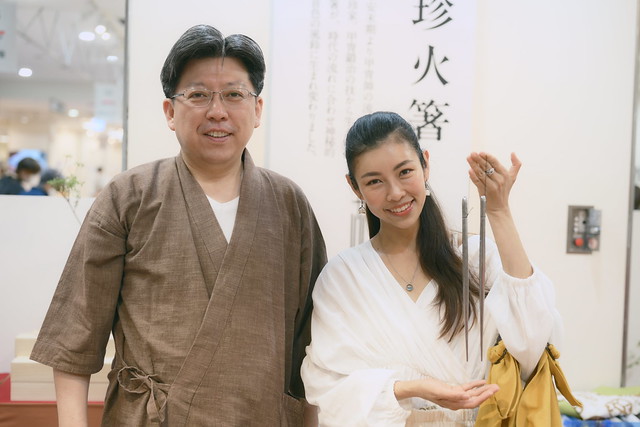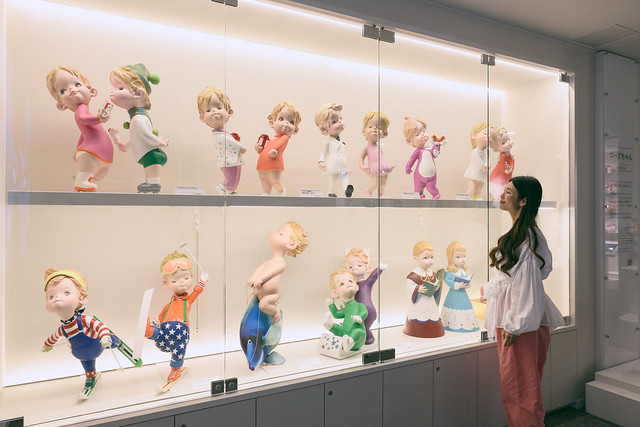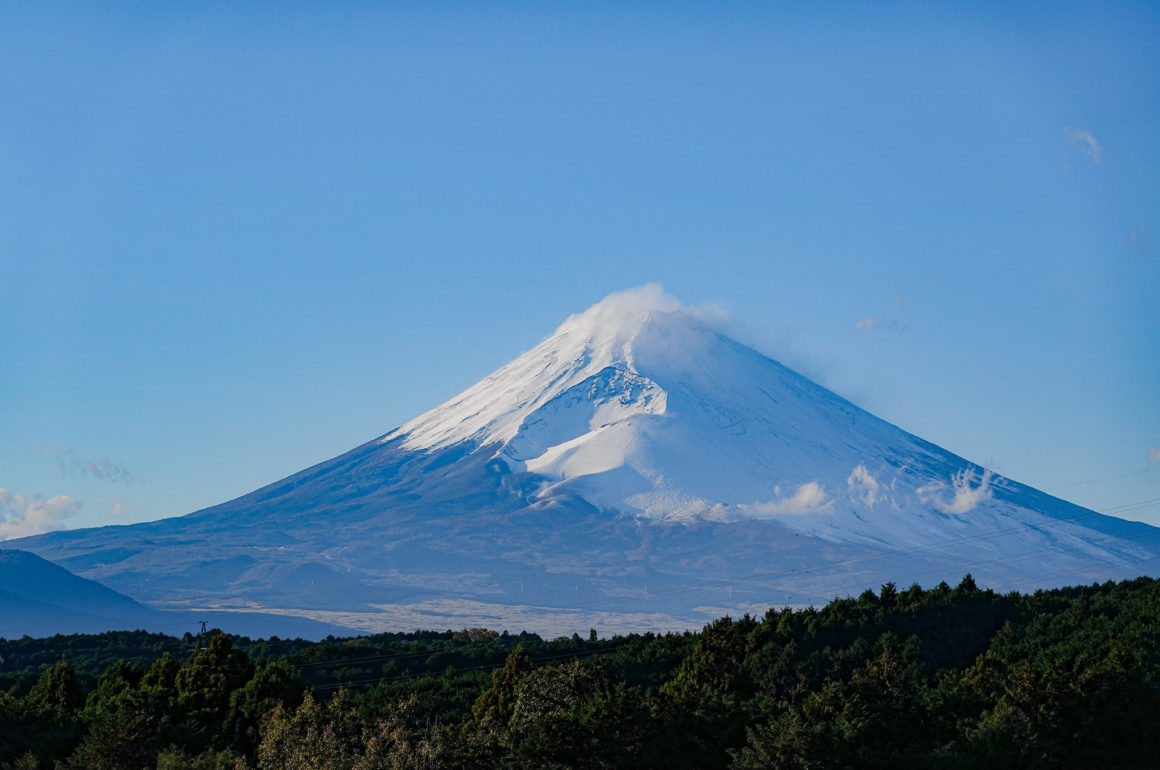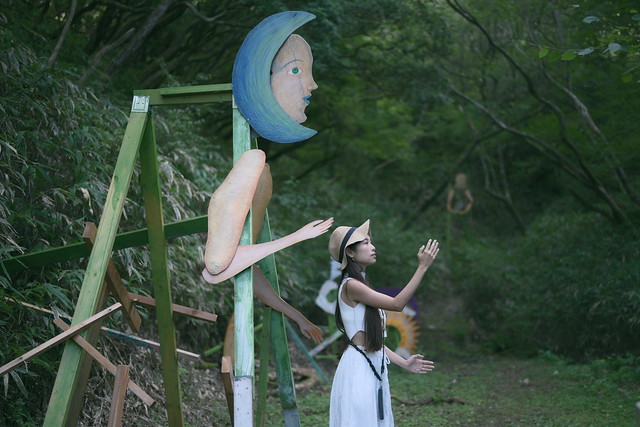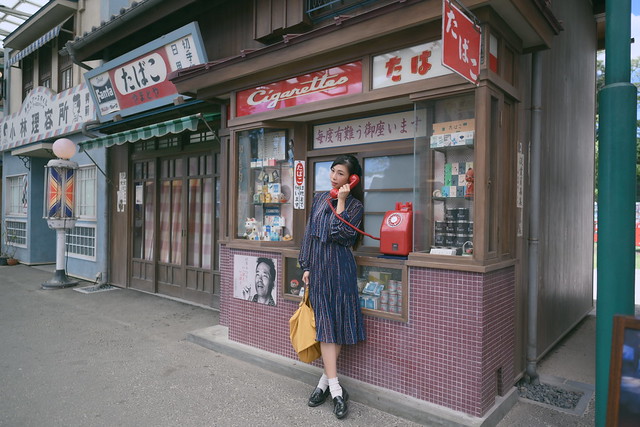Read my previous posts:
MIE PREFECTURE
GIFU PREFECTURE
NAGOYA CITY
Nagoya has proved itself a charming city that has won a place in my heart, as you have read in my previous article. To think that Nagoya is just one of the many allures Aichi prefecture has to offer, I truly wonder how many lives I will need to eventually see enough of Japan till I tire… (which is never).
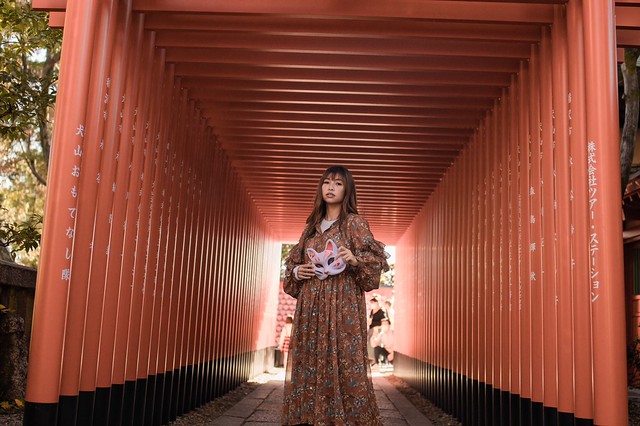
I was ashamed how little I know of Aichi before the trip, given how this region holds some of the most significant historic events during the Warring Period in Japan, and is the birth place of the three greatest war heroes ever known in Japan – Oda Nobunaga, Toyotomi Hideyoshi, and Tokugawa Ieyasu. People in Aichi are not shy to proudly boasts about their home prefecture, and they rightly should!
In this post, let’s look at some other parts of Aichi Prefecture, which are often underrated and completely overshadowed by the dazzles of its glamorous capital city. Hopefully by the end of this post you will be convinced that Aichi is so, so much than just Nagoya.
First, let’s get out of Nagoya! Here are some of the other regions of Aichi I have ventured, including Inuyama, Toyokawa, Gamagori, Nishio, Chita Peninsula and Tokoname.
Inuyama 犬山
Even for travelers who are incurious about Japan’s oldest surviving castle and whatnot, Inuyama city is enjoyable for everyone, and is a perfect example of how a traditional town could attract even young travelers with no affinity to happenings of the bygone time, with just a little creative ideas.
Access: 25 minutes train ride to Inuyama Station from Meitetsu Nagoya Station
Inuyama Castle 犬山城
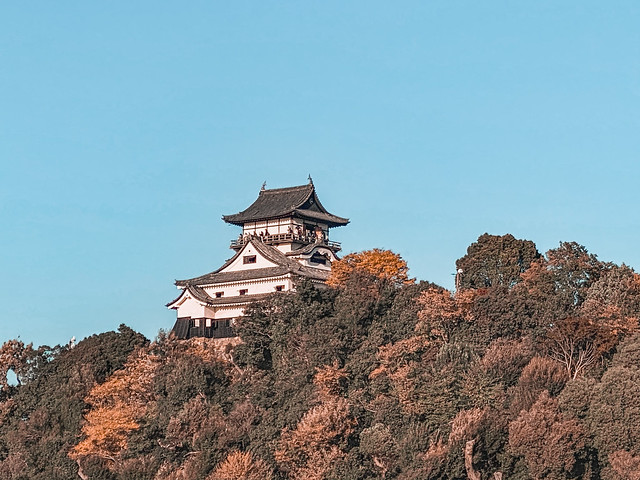
Inuyama Castle

A castle mascot, for example? (Inuyama literally means “dog mountain”.
Unable to even get close to Inuyama Castle, one of the 5 only castles designated national treasure of Japan (the rest are Matsumoto Castle, Matsue Castle, Himeji Castle and Hikone Castle) due to its extreme popularity (and also a weekend on the day of my visit), I gave up the castle tour and head over to its other instagenic spot instead.
Sanko Inari Shrine 三光稲荷神社
This inari shrine enshrines the guardian deity of Inuyama Castle, and is a photogenic spot because of its multiple red vermillion gates reminiscent that of Kyoto’s Fushimi Inari, as well as the pink heart-shape ema (wooden plaques) right next to the torii.
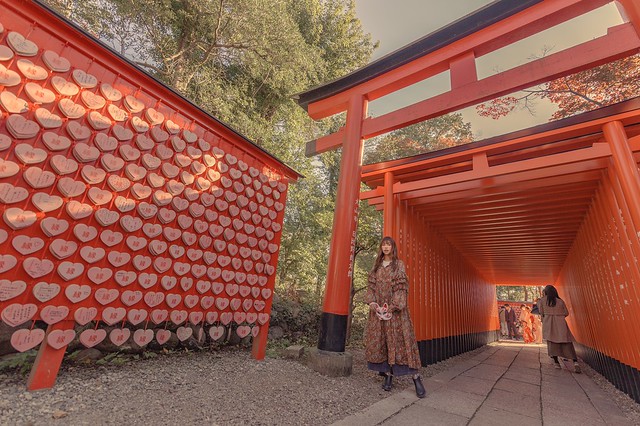

With association to romance and marriage, it is often visited by young ladies or couples. The shrine is also a short cut to the castle sitting on top so the more it is a popular side dish to have for the castle visitors.
Inuyama Jokamachi Castle Town 犬山城下町
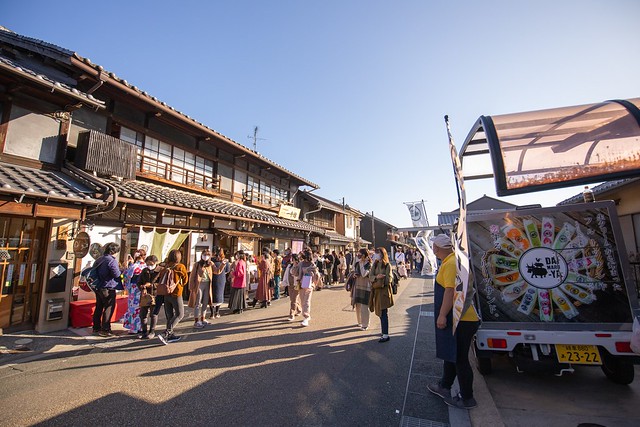
An old town street just like you will find in many other castle towns all over Japan, Inuyama Jokamachi offers lots of traditional charm, but with a twist. Other than traditional cuisine and craft, a trendy vibe is injected all around town, and its hard not to be lured into a store by cute little decors, tantalizing kawaii treats and the likes.
Seeing how young travelers are filling the street, these old merchants tried to get a little creative and it worked!
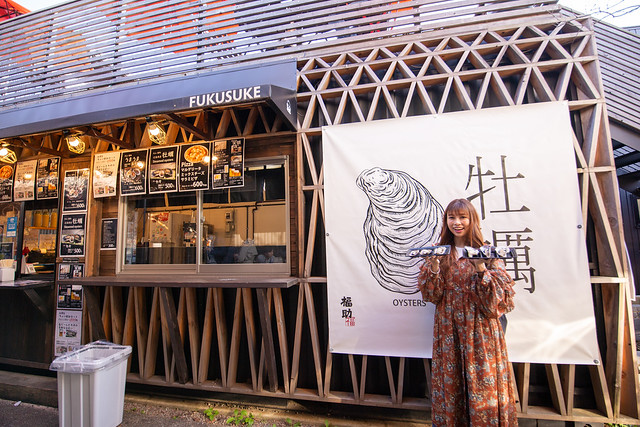
Oyster bar at Inuyama Jokamachi Castle Town
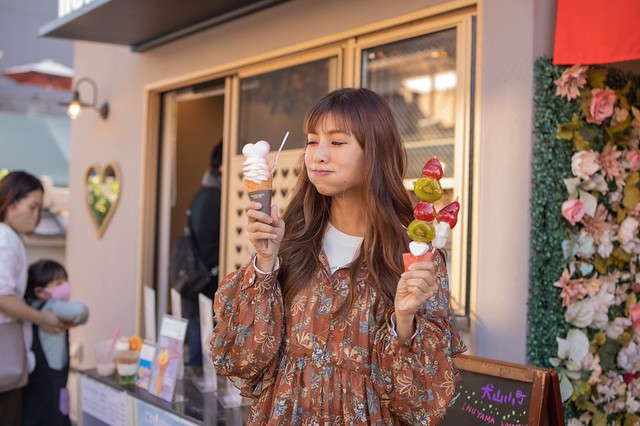
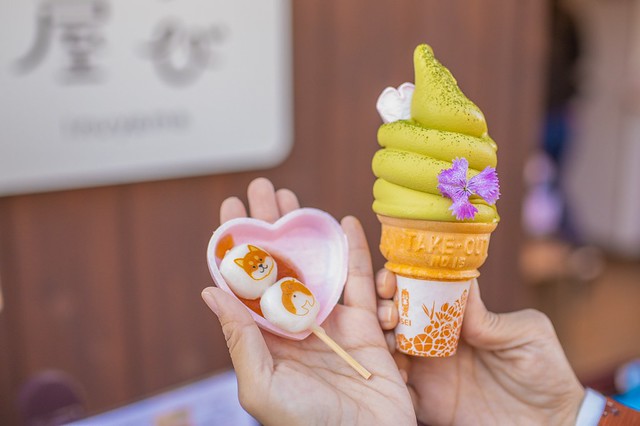
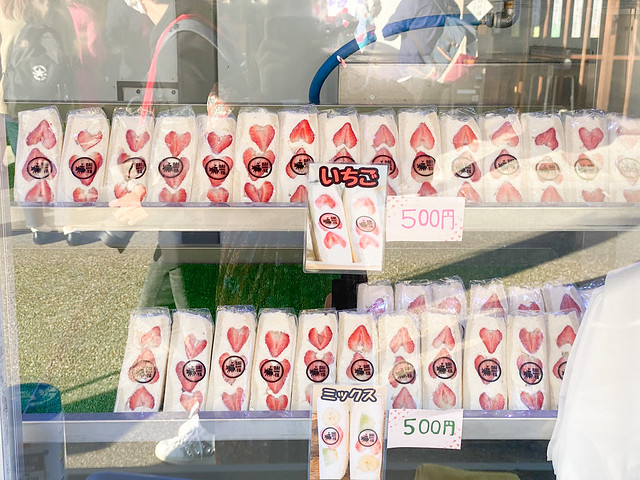
It feels to me like an Edo version of Harajuku, where you spot young girls dressed in kimono queuing up for multi-colored mochi, pastel soft serve embellished with hearts and stars, all sorts of other Insta-worthy traditional sweets.
Okazaki 岡崎
Okazaki is a humble, peaceful castle town in Aichi prefecture. However the people of Okazaki are extremely proud of two things: their hometown being the birthplace of Shogun Tokugawa Ieyasu, and their Hatcho miso.
Kakukyu Miso Factory
If you are familiar with Japanese cuisine, you might have noticed that there are countless types of miso used in different regions in Japan, but generally could be categorized into 3 major types of miso based on the ingredients used and fermentation methods, namely the white miso (made of soybean and rice, such as Kyoto’s Saikyo Miso), yellow miso (made of soybean and barley, such as Shinshu miso), and red miso (made of only soybean).

Japan’s miso map (image from google)
Interestingly, if you look at this map of miso, you will notice a distinctive color difference between region. The darker the color, the richer and more pungent the flavor is. Hatcho miso of Aichi prefecture is a signature dark miso, in fact, the color is so dark it should probably be called the black miso.

Today we are touring Kakukyu, a miso factory that makes Hatcho miso since 1645 in Okazaki city of Aichi prefecture.
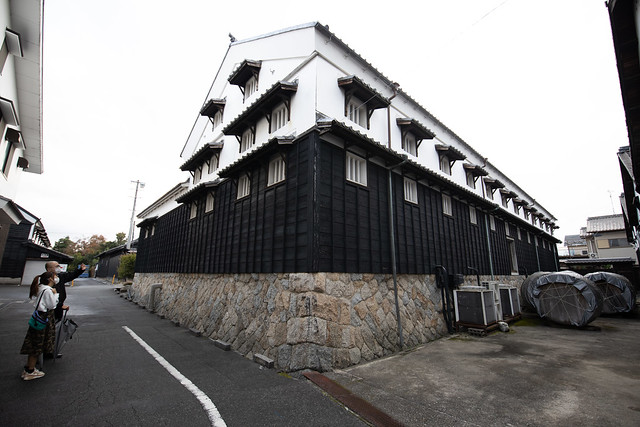
There’s a little museum in the facility detailing the history of Hatcho miso, with lots of artifacts in display such as this gigantic barrel that’s 180 years old. Later I learnt that it was an insult to call it an artifact, as the same colossal barrels from almost two centuries ago are still used until today…

In there you will learn about how Hatcho miso was made back in the Edo period. Hatcho miso is made of only soybeans and salt. The fermented soybean koji is being stored in these cedar wood casks, and a worker will then wear a pair of tabi socks, climb into the cask and stomp on the miso repeatedly… Once that process is done, the cask will be covered with a lid and then they will pile a whopping 3 tons of river stone, one by one, perfectly on top of the lid, and it is to be left in the warehouse for 2 summers and 2 winters, before it eventually becomes the beautiful dark red miso in that piping bowl of nutritious soup one would sip on.
I was then led to see the actual miso-making process in modern day. The moment the door of the miso store house slid open, I could almost feel that hot, wet sensation in my eyes…
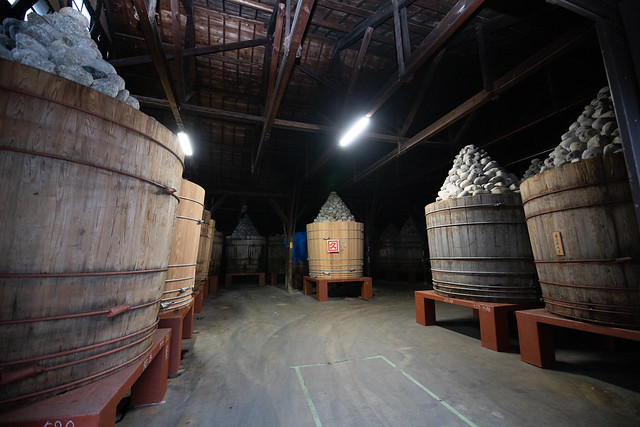
It is made just like 400 years ago. Exactly the same. Except they replace the tabi socks with sanitized rubber boots. Just this photo alone justifies any ¥ spent for purchasing Kakukyu’s products. (By the way the factory tour is completely free of charge!)
After the tour, I dashed to the gift store and got myself a full year’s supply of Hatcho miso products in support of the admirable preservation of a beautiful tradition.
Gamagori 蒲郡
Laguna Ten Bosch & Lagunasia
Looking for some theme-park fun? Laguna Ten Bosch & Lagunasia is Aichi’s very own marine-themed resort that’s super popular in summer time for its water park. However just like many other theme parks in Japan, the amusement complex is turned into a glittery wonderland comes winter.

This year, the Christmas theme light-up is breathtaking, with several major 3D illuminations and projection mapping being the tourist magnet of the year.

The highlight was water projection mapping show – AGUA. Combined with myriads of colorful lights, water screen, laser beams, animation and real life dancers, it was nothing like I’ve seen before and I must say it was pretty impressive.
For thrill seekers, know that there are also of course, roller coaster rides, festive markets and bazaar for the shopaholic and even a thermal spa complex with authentic spring from Gamagoori, for onsen addicts like me!
Henn Na Hotel
If your active offsprings are not dazzled by the lights and live shows just yet, here’s something else to impress.
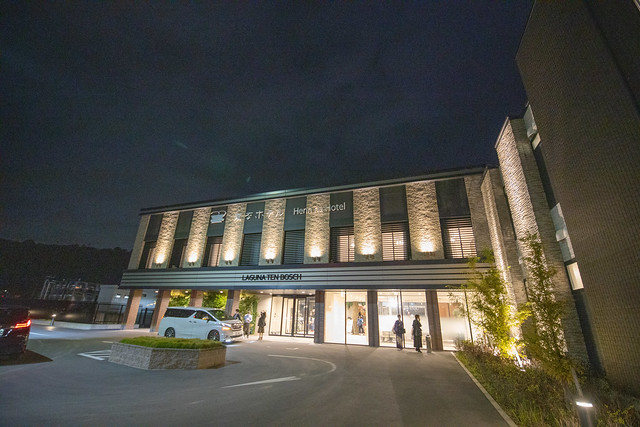
Adjacent to the amusement park, Henn Na Hotel, quite literally “Strange Hotel” in Japanese, will wake your sleepy kids up with their life-size talking robots who will assist you with your check ins!!

“Rawr, how may I help you?”

The dinosaurs are very good at keeping their social distance, so I guess this ST¥trange Hotel it’s kind of strangely a perfect fit at this strange kind of time, huh.
Island of the Gods – Takeshima 竹島
So… this attraction was not originally on my itinerary. Sometimes I think destiny brings you to where you belong. The original plan was that I would stay at Henn Na Hotel after my visit to Laguna Ten Bosch. Alas, the robotic dinosaurs were so popular it was fully booked that night. So I was put up at Gamagoori Takeshima Hotel, just a short drive from the theme park.
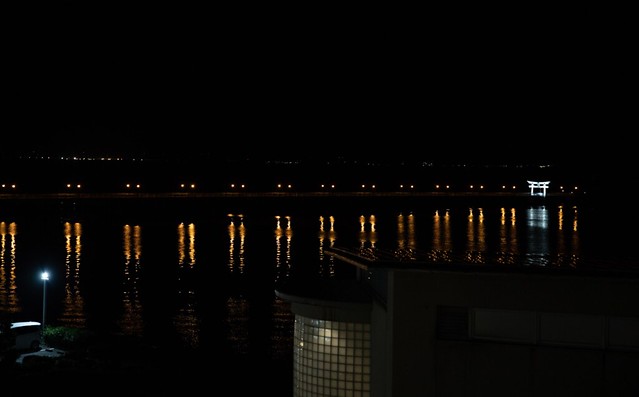
I checked in, rested comfortably in my tatami room, pulled the curtain open and saw this sight right before me…
Is that a torii? In the middle of the sea?! A quick search revealed that it was a torii over a bridge leading up to an island – Takeshima. Unable to contain my excitement of this fateful discovery, I found myself wandering in darkness in the thin yukata pajama I just changed into…

It was surreal. I actually walked further up to the stairs leading to the shrine, but didn’t dare venture further. There was something so hauntingly beautiful about this mysterious island. I decided to sleep it off and continue my adventure the next morning if I could wake up early enough.
And so I did.
Takeshima is special in many ways.
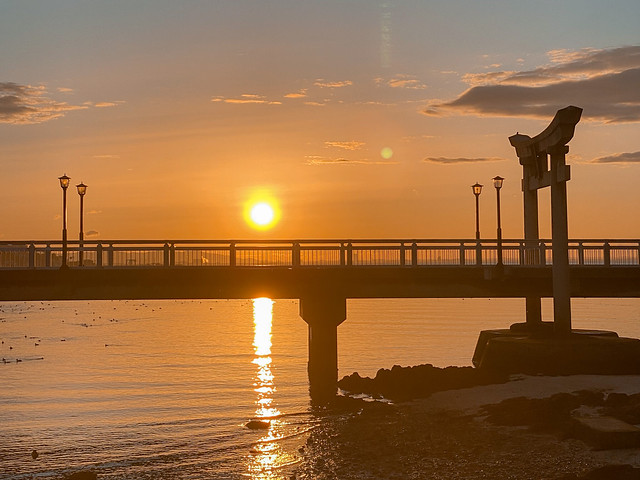
First of all, it is an inhabited dome-shaped island that has a giant torii straddling over a bridge that connects to the mainland – this is the only place in a whole of Japan where a bridge runs through a torii.
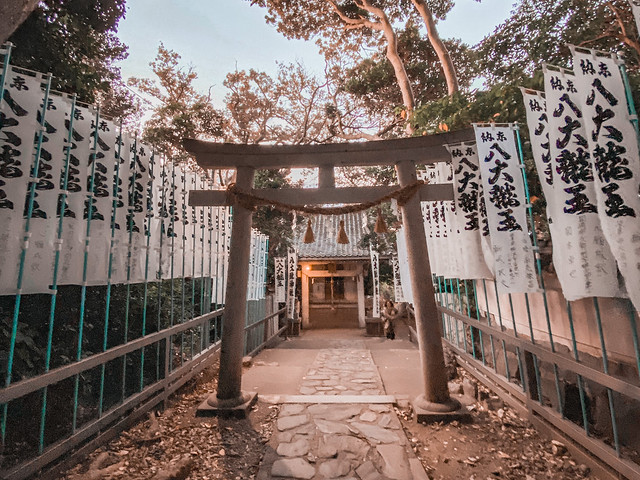
Secondly, the only buildings on the tiny island are 5 shrines. It is said that once you prayed at all 5 shrines, you will be blessed for the rest of your life.
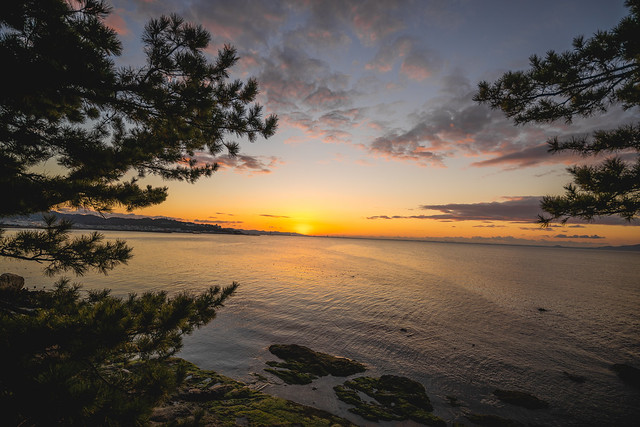
It’s time to rise.


Also, worms for the early birds. Here’s a spendid sunrise I witnessed, as I decided to trek the mini island – you can walk around the entire island in just 30 minutes, given that you don’t end up gazing in amazement for too long at how beautiful it is…
Stay: Gamagoori Takeshima Hotel
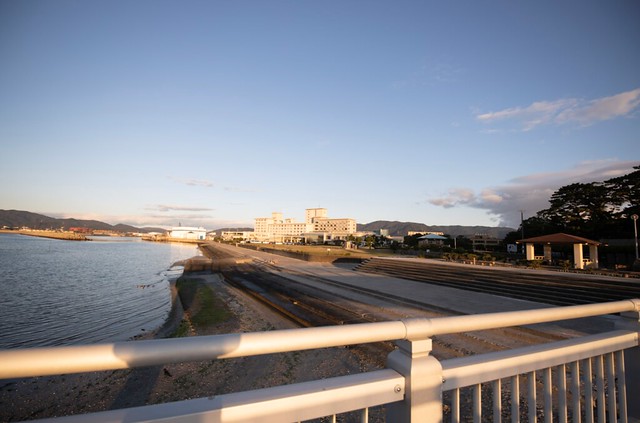
So you see the white building afar from my vantage point on the bridge, that’s the hotel I stayed the night for. And the walk to cross the bridge and to reach the shrine is about 15 minutes. I woke up 6am for the visit, spent plenty of time basking in morning sunshine and listening to the serene waves of ocean, and still able to make it in time for breakfast at 7:30am.

This was dinner, though, absolutely fancy!
Nishio 西尾
So, matcha lovers, hear me out. Most of you already know that Uji in Kyoto produces Japan’s premium green tea. For the well-versed, you may also know of Fuji in Shizuoka when it comes to the fragrant green leaves. Do you know Nishio in Aichi prefecture? If you didn’t, you should.
Aoi Seicha
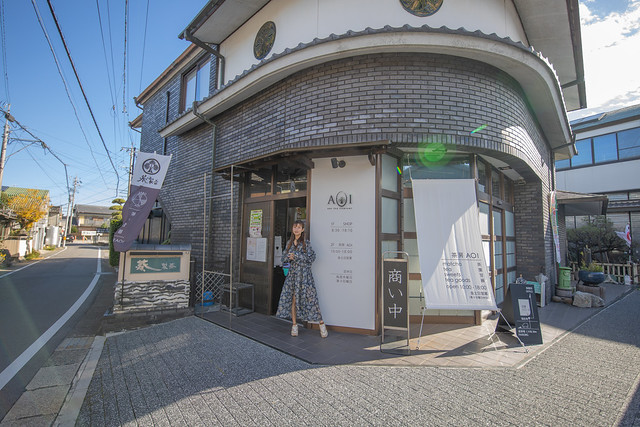
Nishio city in Aichi prefecture is recognized as one of the top-class matcha producers in Japan, along with the former two. Today we are visiting Aoi Seicha, a Nishio-born matcha manufacturer since the Taisho era (around a century ago).
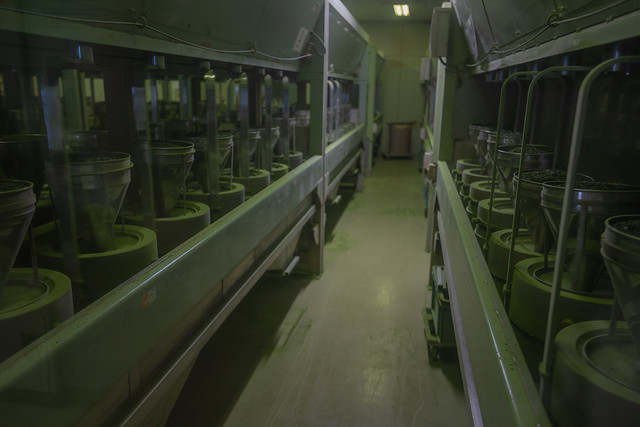
A quick factory tour costs only 350 yen…
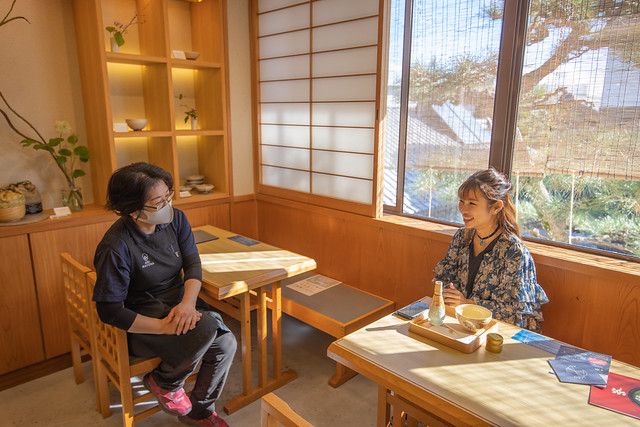
That comes with a matcha tea set (including delightful wagashi), and also value-added friendly chat by the super welcoming staff of Aoi Seicha. How is that not overly worthwhile??

If you want to make your own bowl of matcha you are welcome to, it will cost another additional JPY500.
Minamichita Town 南知多町
Minamichita Town is located at the southern end of Chita peninsula of Aichi, surrounded by the abundance of Ise Bay and Mikawa Bay. One can expect really supreme seafood and lots of onsen relaxation here.
Uotaro

Uotaro is a seafood market with a restaurant next to it. If you are not cooking or ice-packing freshly frozen seafood back to your home country, at least you still get to enjoy some really yummy daily catch here!
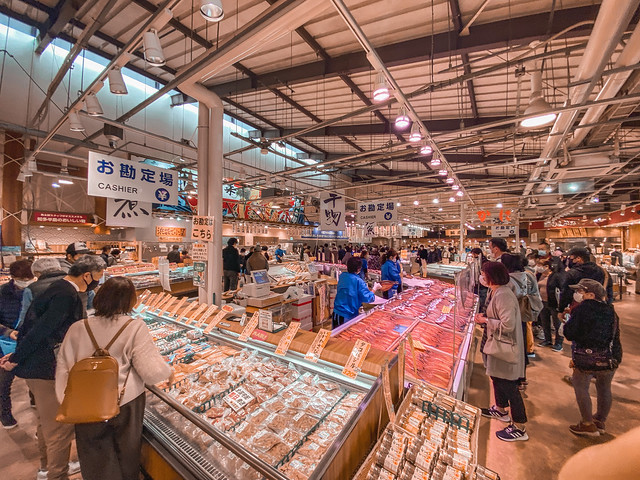
It was a public holiday went I visited, you could see it was filled with visitors who would really like to bring home some ocean’s delight.

This is the food court adjacent to the market, offering really affordable sashimi seafood bowls and other freshly cooked seafood.

I couldn’t resist the enticing scent of charcoal grilled oyster so I ordered a plate of three. And another three, and another… It was that good!!!
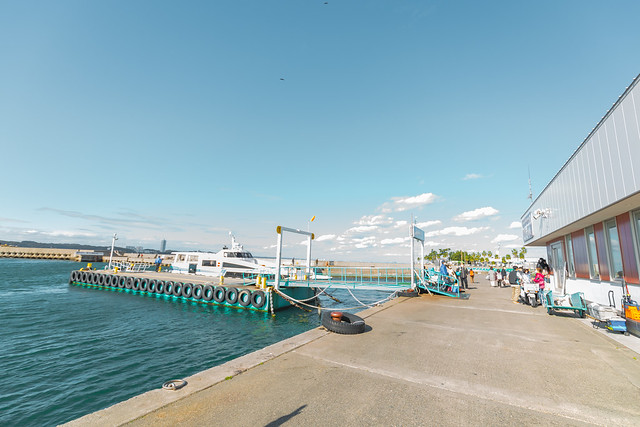
So… there’s another reason why we came all the way here to Uotaro for seafood – it is located near Morozaki Port, where we will take a ferry over to our next destination!
Himakajima Island 日間賀島
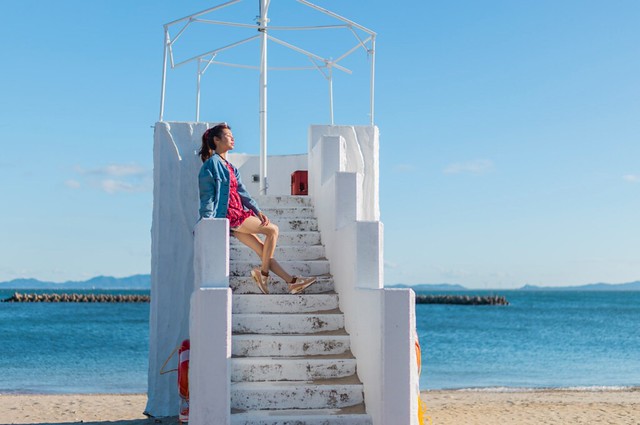
This is another old-spot-reborn as one of the hottest destinations for youthful travelers right in Aichi, and once you step foot on this breezy sunny island, the reason becomes immediately apparent.
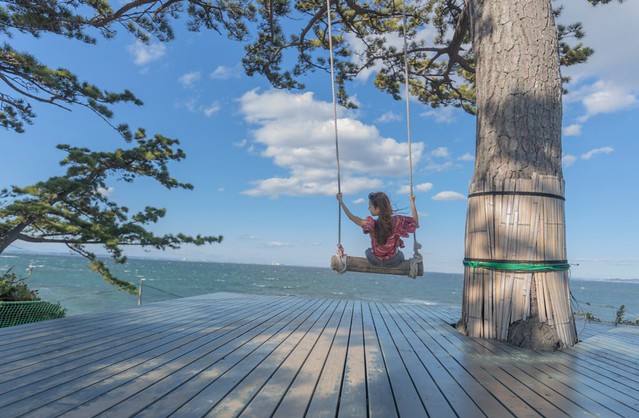
Traditionally a peaceful, sleepy fishing town, Himakajima has transformed into a equally laidback, but much more stylish and hip resort destination with lots of instagenic points to score.
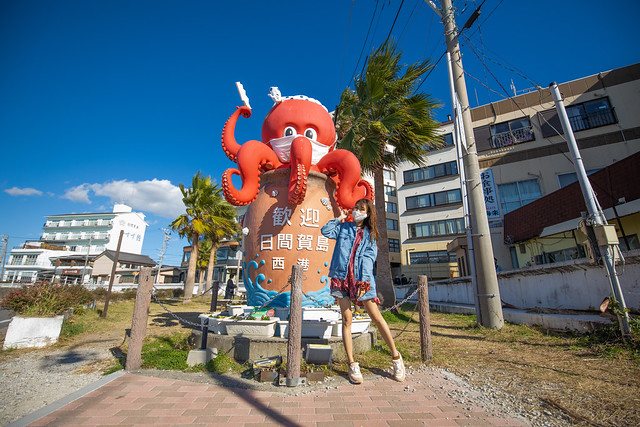
It’s hard not to notice the omnipresent tako (octopus in Japanese, as known in “takoyaki”) all over this tiny island, which could be explored all on foot in just a couple of hours. It’s not difficult to guess that octopus-fishing is one of the major reasons contributed to the island’s flourishing in the past, and now a delicious traveler’s lure for its tourism industry.

See how many red tako you can spot all over the island! They should totally create a treasure map for this. Haha.
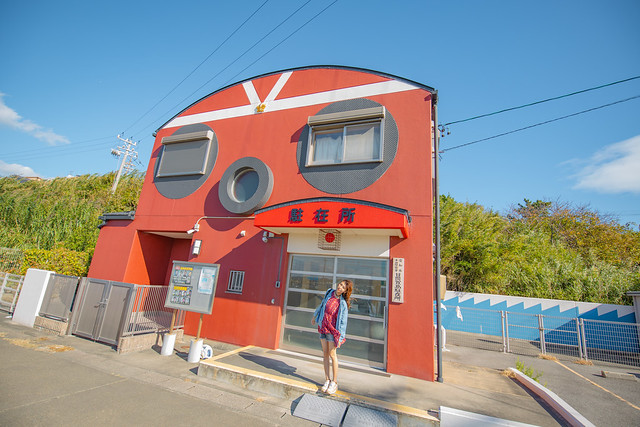
Holy moly octopus! Even the police station looks like a tako!
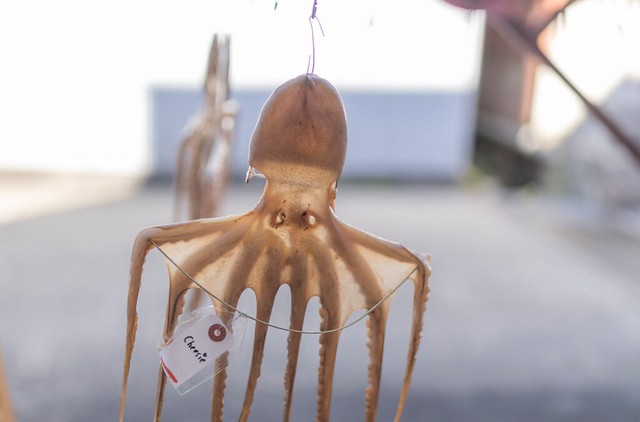
How about a real life octopus? Yes I made this.
So, of course you can eat all sorts of tako-snacks, including grilled tako, tako senbei (rice crackers), or shop for canned tako ajillo (really delicious!). You can even make your own dried tako, as illustrated in the photo above.

Once sun-dried, it will turn into a kite-like sheet like this which you can then bring home and cook a variety of dishes.
If you are ever worn out by the urban life, escape to Himakajima Island for some laidback daydreaming and refreshing resort fun.
Stay: Genji Koh Ryokan
Do you know The Tale of Genji (Genji Monogatari)? Nothing, it is only the first ever novel written in the world, by Lady Murasaki Shikibu 100 years ago. I wouldn’t go into the details, but know that Genji Koh, literally “scent of Genji”, is a beautiful ryokan with Japan’s earliest scents as its theme.
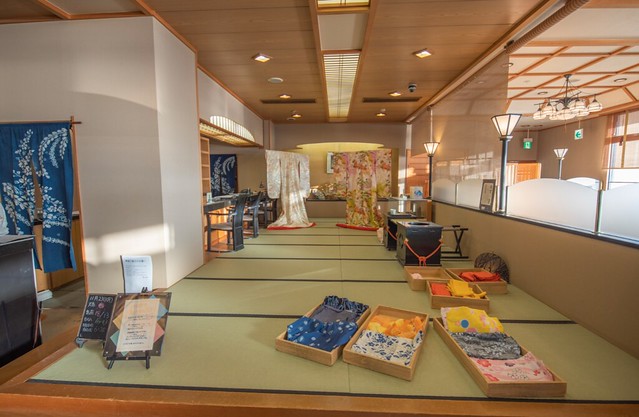
Located in the Chita peninsula, Genji Koh is a classy onsen ryokan that provides an authentic experience for those who appreciate a bit of art, story telling of the past and of course, for everyone else, good food.
What impressed me was the gorgeous selection of yukata at the lobby, completely free of charge.
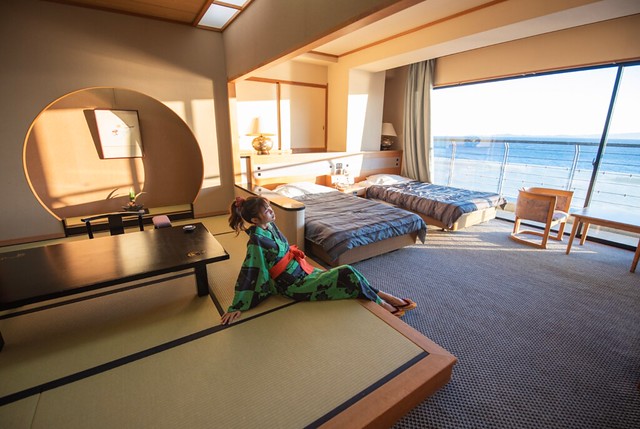
Room is too spacious for one pax… though.

Here’s the kimono I picked. Trying to get a sniff of Heian that’s floating in the air all over the ryokan.
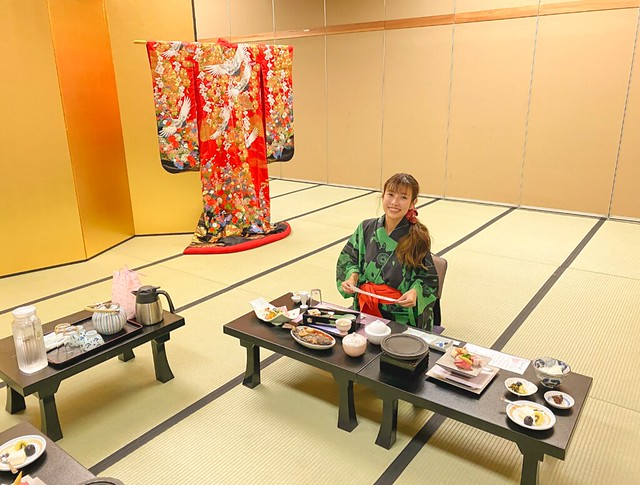
There are lots of admire, including this banquet hall decorated with an exquisite kimono one can picture a Heian Princess would be wearing…
Tokoname 常滑

Tokoname is quite a special place for me, as it was one of the first few places I visited of Japan! In 2010, I went to Tokoname for a homestay program and this is my second visit after a whole decade!

Tokonyan, Tokoname’s guardian cat gazing out over the town from the top of Tokoname Manekineko Street
Tokoname is best known for its pottery production, and just like tako is a lucky mascot for Himakajima, Manekineko, the “welcoming cat” is iconic to Tokoname city. You can spot manekineko of different sizes in the most surprising places all over town.

Clay Pipe Hill – Dokanzaka
For those of you who have watched “A Whisker Away”, a recent Netflix favorite, you may want to know that Tokoname is home to the popular anime’s setting, and, you guessed it! You can actually make an anime pilgrimage and hunt for all the spots and compare anime scenes VS real life spots!

There was a pilgrimage campaign going on until end of November 2020, although you can no longer redeem prizes and collect stamps, it is still fun to follow the footsteps of the characters in the movie and immerse in their world of fantasy.
Here are some of my attempts, go to my Instagram post for more!
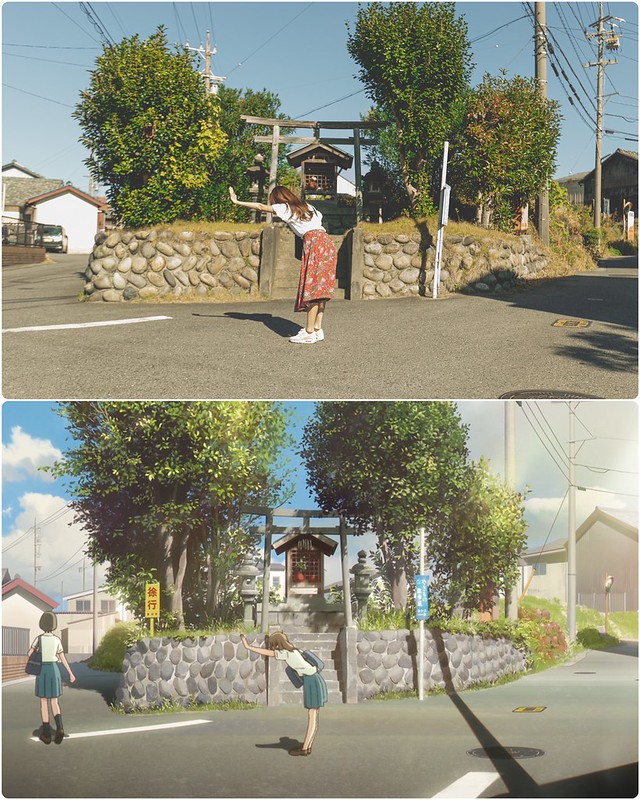
When Muge bid goodbye to her bestfriend.
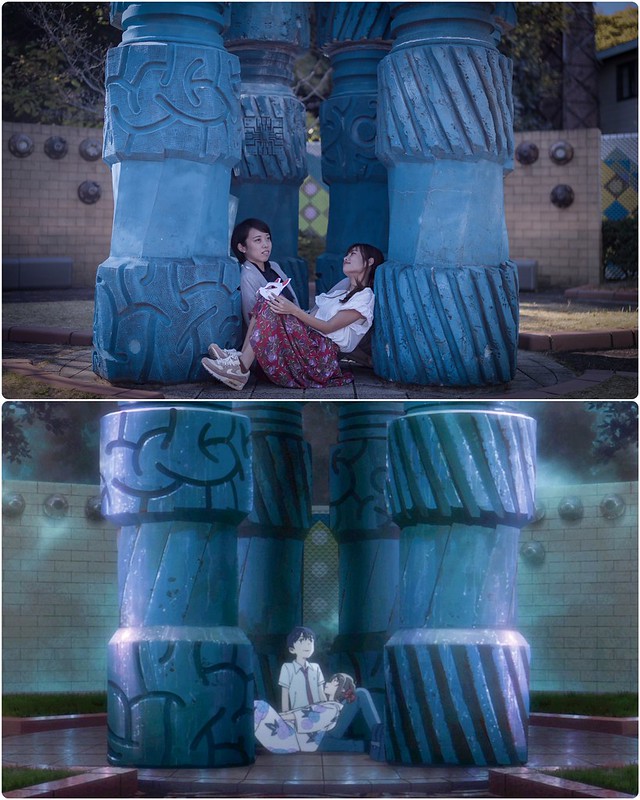
When Muge and Hinode were enjoying summer fireworks.

Colorful tiles at the Climbing Kiln Square.
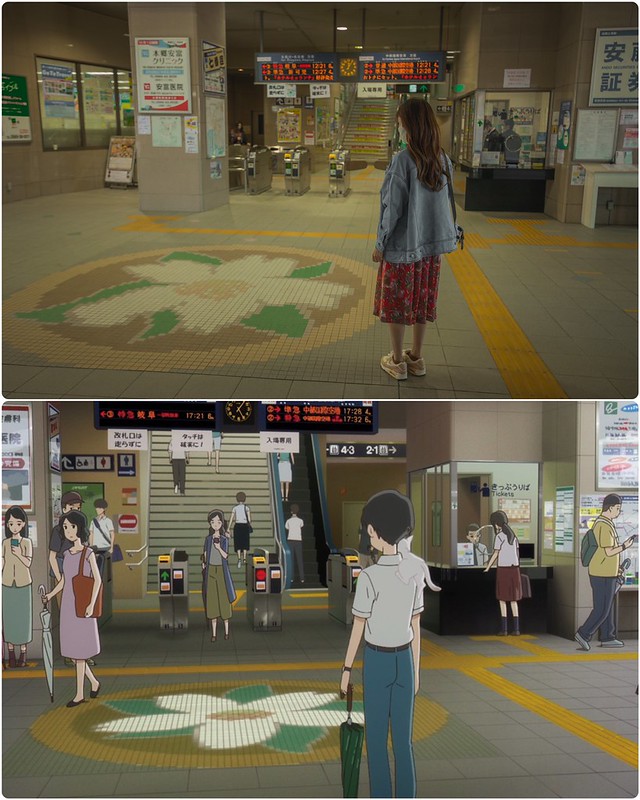
Tokoname Station.
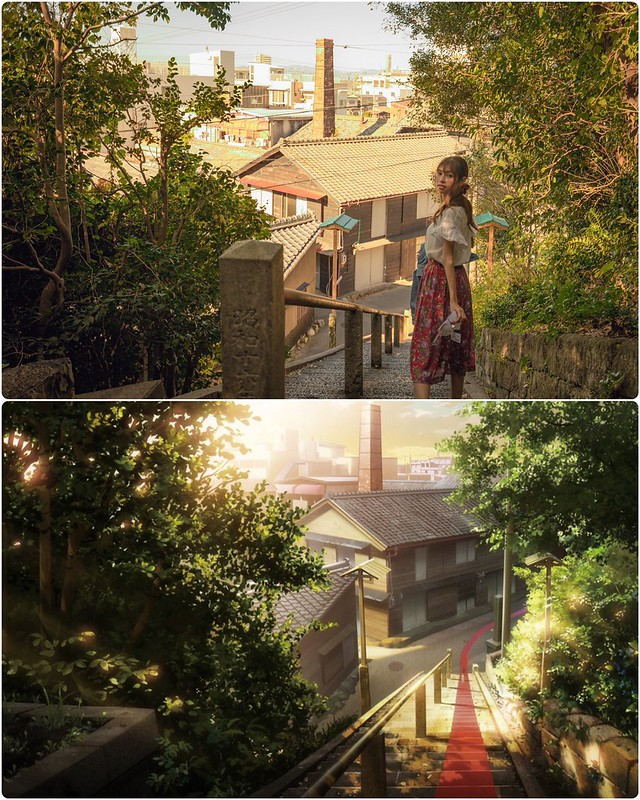
This flight of stairs are where the cat path appeared leading to the fantasy world. In real life it belongs to an actual shrine.

You can actually make a visit to the shrine and get a special A Whisker Away limited edition Goshuin!
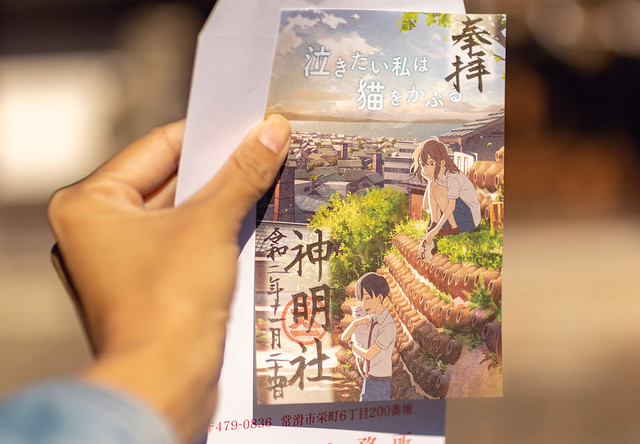
Here’s how it look!!
Watch this collaboration video of A Whisker Away X Aichi Prefecture to learn more about the movie and the real life spots.
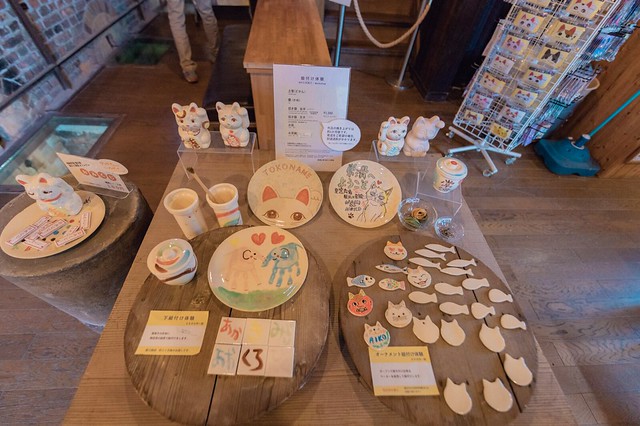
You can also find places where you can make your own pottery or simple painting.
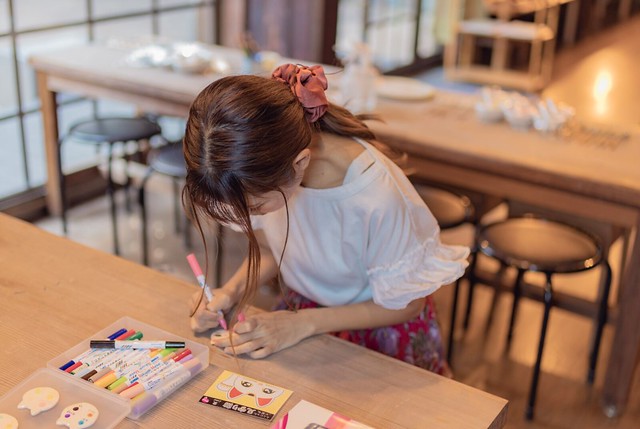
Here’s my designing my own Manekineko.

Pretty quick and easy as a memento to bring home with you.
That’s all for Aichi Prefecture this time. I hope you liked some of the destinations introduced in this article. Next up, we are going closer to east of Japan, and will be exploring the allures of Shizuoka Prefecture.
Stay tuned!
Meanwhile, check out JAPAN by Japan for travel ideas, itinerary and a chance to win a pair of return flight tickets to Japan!


